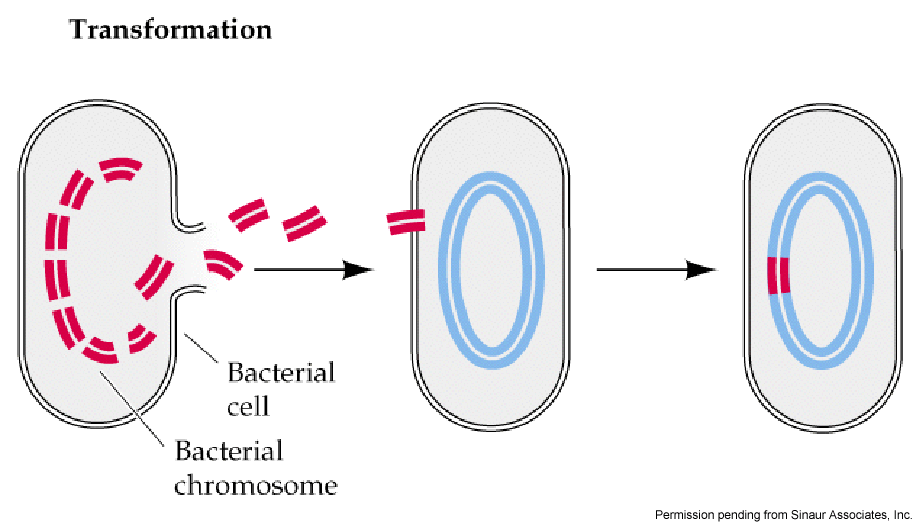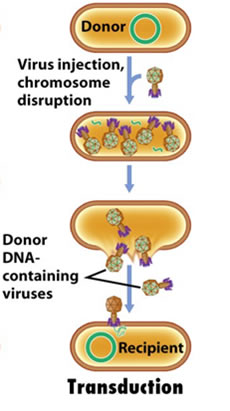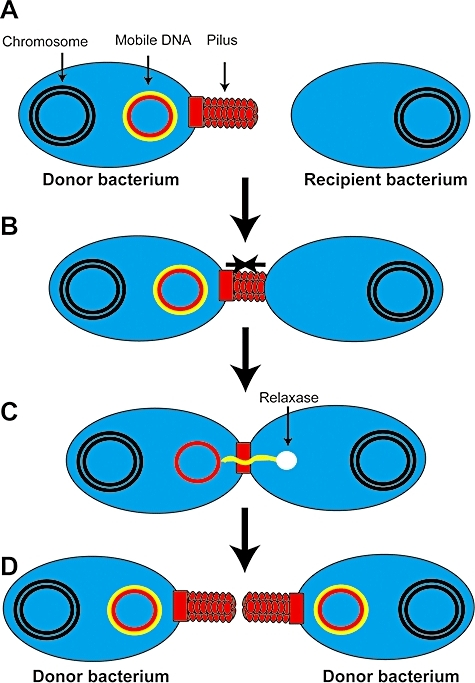How is bacterial transformation different from conjugation and transduction?
1 Answer
Gene transfer refers to the movement of genetic information between organisms. Vertical gene transfer passes genes from parent to offspring.
Lateral gene transfer passes genes to other cells in the same generation. It occurs in bacteria by transformation, transduction, and conjugation.
Bacterial transformation was discovered in 1928 by Griffith, who showed that a mixed culture of live rough and heat-killed smooth pneumococci could produce live smooth pneumococci capable of killing mice. (Black)
How could dead bacteria give genes to the live bacteria?
The dead one left DNA behind which was picked up by the alive bacteria, changing it so that it could kill.

In transduction, genetic material is carried by a bacteriophage ('phage). Again. this adds alleles to the organism.
(Black)

Just imagine you would kiss somebody and thereby exchange genetic information with your mate, which helps you to survive under certain environmental conditions. Incredible? Well, this is exactly what bacteria cells are able to do and what is called conjugation.
Scientifically, this term describes the transfer of genetic information from a donor bacterium to a recipient bacterium. They have to establish a cytoplasm bridge for this task, so the cells have to be in direct contact.


